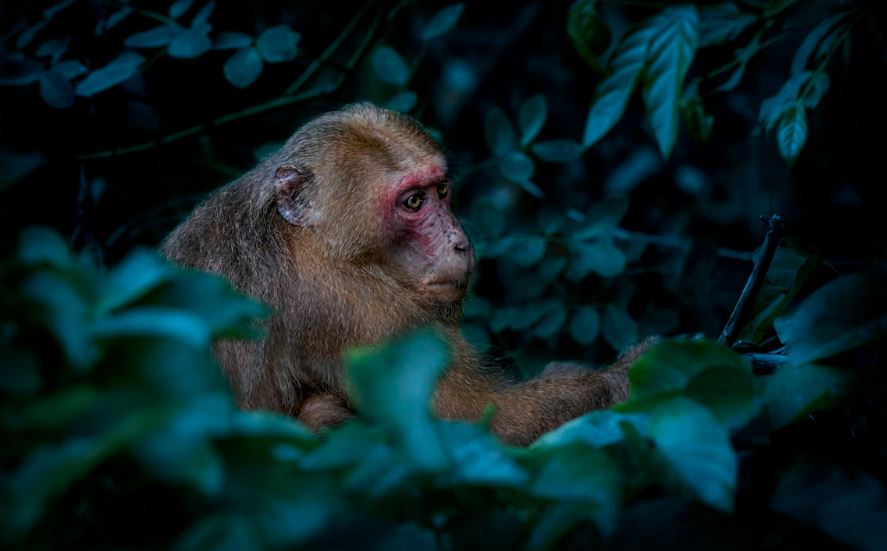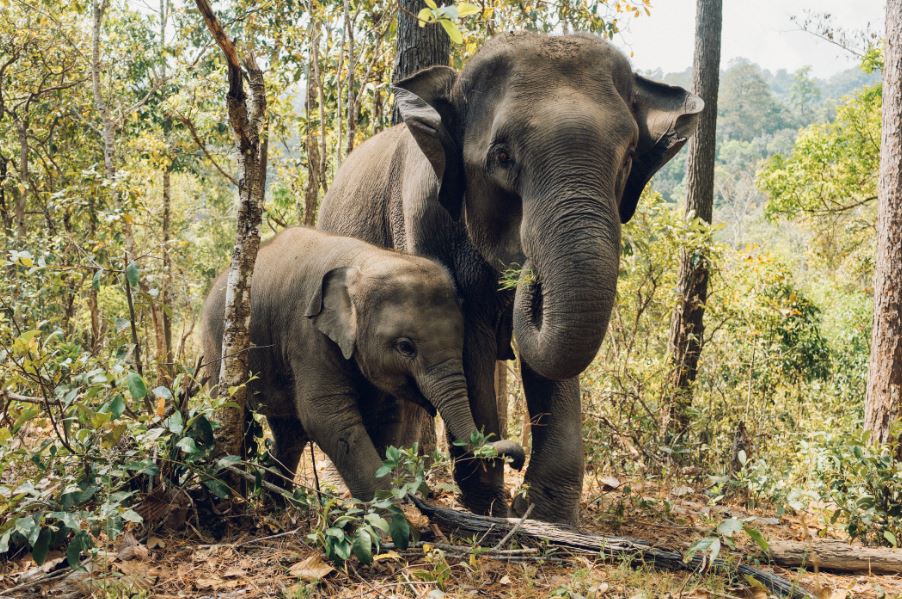South East Asia’s Thailand is home to some of the region’s most well-known and beautiful beaches. This nation, which is beautiful and rich in culture, is also home to the most incredible wildlife. Only a few of these incredible animals will we be able to locate and identify. More than 10% of all animals on the planet reside in Thailand. Aside from the Golden Tree Snake, there are over 285 different species of mammals, including gibbons, monkeys, and macaques as well as elephants, tigers, leopards, Malaysian sun bears, sambars, deer, and otters. On this amazing group of islands, sheep, goats, wild cattle, and wild hogs are also prevalent. So as a backpacker, it is better to know tips for staying safe in Thailand.
Just 200 kilometers separate Khao Yai National Park from Bangkok. Elephants, bears, and exotic birds are among the wildlife that can be found in this national park. The highest peak in Thailand is located in the Doi Inthanon National Park, which bears the same name as the park. The park contains indigenous hill tribes, waterfalls, and orchid-filled forests. Bird watchers love the Khao Sam Roi Yot National Park. This park’s coastal setting includes marshes that are home to a variety of waterfowl and other marine creatures, including occasionally sighted Irrawaddy dolphins. A magnificent seven-tiered waterfall and four caves can be found in western Thailand’s Erawan National Park. Here is a tropical forest with a plethora of wildlife.
1. Elephants
In Thailand, there are about 2000 wild elephants. Most logging elephants ended up in the tourism sector after a logging ban in 1989. The elephants involved in this disgusting trade are severely abused and mistreated, and it is a huge tourist trap. Sixty percent of Thailand’s total elephant population lives in captivity, and of those, sixty percent are used in tourism. Many of Thailand’s captive elephants are taken from the wild through poaching. Elephants are so deeply ingrained in Thai culture that people view them as a representation of their country. These magnificent animals have long supported Thai people in activities like war, labor, transportation, and, regrettably, more recently, tourism.
Elephant sanctuaries, which allow visitors to interact with the animals instead of riding them, are growing in popularity. Even so, there is still a lot of unnatural behavior and human-elephant interaction in these sanctuaries. Elephant tourism is being revolutionized by GVI’s Chiang Mai elephant project. Our project supports the elephants and their mahouts while minimizing interaction and providing volunteers with an unforgettable once-in-a-lifetime experience.
Elephants and Royalty
Elephants came to be associated with royalty, and a king’s status and power increased in direct proportion to the number of elephants he owned. In particular, white elephants were connected to royalty and a king’s moral authority. Thai kings used owning white elephants as a way to demonstrate their authority as a result.
The eyes, palate, toenails, hair, skin, tail, and genitalia of white elephants in Thailand are not albinos; rather, they have white coloring in these seven prominent locations.
White elephants are protected as sacred animals and cannot be used for labor, sold, donated to, or killed. As a result, maintaining them is very expensive. According to legend, Thai kings used to occasionally give their adversaries white elephants as the cost of caring for non-working elephants would eventually bankrupt them.
2. Malaysian Sun Bear
A white or yellowish patch on the chest clearly distinguishes the Malaysian sun bear from other bear species. Despite being a small part of Thailand’s wildlife, they stand out because they are so uncommon and special. Sun bears spend a lot of time in trees and is excellent climbers. They eat termites, other insects, birds, small rodents, sweet fruits, and other types of fruit. They can only reach lengths of 120–150 cm and weigh between 35 and 80 kg, making them relatively small.
These gorgeous Malaysian Sun Bears are under numerous threats. Sun bears are hunted for their body parts, including their gallbladders, which have been shown by scientists to have no medicinal value at all. This practice is common among bears in Asia. Hopefully, this will change as people become more aware of the dearth of medicinal properties this poor, helpless animal possesses. Sometimes, nursing female sun bears are killed, and their cubs are taken away and sold as pets. An important problem that affects wildlife not just in Thailand but sadly everywhere.
3. Gibbons
Any of the roughly 20 species of small apes known as gibbons can be found in Southeast Asia’s tropical forests. The great apes (gorillas, orangutans, chimpanzees, and bonobos) share traits with humans, such as a human-like build and the absence of a tail for balance, but gibbons don’t appear to have higher cognitive functions or self-awareness. They are also distinguished from great apes by having arms that are noticeably longer, thicker hair, and a throat sac that serves to amplify sounds. Gibbon’s voices are strong and musical in tone, and they can be heard far away. The “great call,” which is used by both sexes as a territorial marker and is typically a duet in which the female leads and the male joins in with less-complex notes, is the most recognizable vocalization.
Gibbons are arboreal creatures that swing from their arms to move quickly and with great agility from branch to branch. Gibbons walk upright on the ground with their arms raised or behind them. They live in small, monogamous groups and are active during the day, defending territories in the treetops. They consume mostly fruit, varying amounts of leaves, insects, bird eggs, and young birds as well. Single offspring are born after a gestation period of roughly seven months and mature after seven years.
4. Indochinese Leopard
The Western Forest Complex, Kaeng Krachan-Kui Buri, and Khlong Saeng-Khao Sok protected area complexes in Thailand are home to the Indochinese leopard. However, it has not been observed in the nation’s northern and southern central forest complexes since the turn of the twenty-first century. The leopard’s success in the wild is attributed to several factors, including its well-camouflaged fur, opportunistic hunting style, varied diet, and strength to lift heavy carcasses into trees. It can adapt to a variety of habitats, including rainforest, steppe, arid, and montane areas, as well as its ability to run at speeds up to.
Leopards exhibit a wide range of coat hues and rosette patterns. Generally speaking, the coat is patterned with black rosettes and ranges in color from pale yellow to deep gold or tawny. Black spots cover the belly, lower limbs, and head. There is a general correlation between coat color and pattern and habitat type. While their rosettes are squarer in southern Africa and larger in populations from Asia, they are circular in East Africa. In desert populations, their yellow coats are typically paler and cream-colored, grayer in colder climates, and of a darker golden hue in rainforest habitats. The fur beneath the belly is typically lighter in color and downier in texture. Along the face, limbs, and underbelly, open rosettes are typically replaced by solid black spots.


